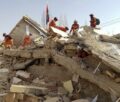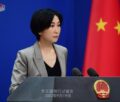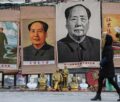Khalistanis Tryst with Referendum 2020
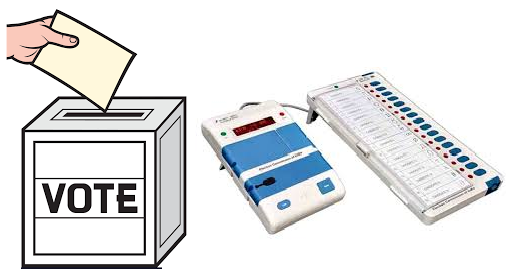
By Malladi Rama Rao
Early August, US based Sikhs for Justice, SFJ, mounted “Mission I-Day” to coincide with India’s Independence Day as a curtain raiser to its ‘Referendum 2020’ for carving Khalistan out of Indian Punjab province. The ‘Referendum’ was scheduled for November this year but has since been put off to 2022. About it a little while later, but, first about “Mission I-Day.”
SFJ gave a call to hold demonstrations before Indian Missions. It also announced rewards for hoisting the Khalistani flag at district and village level across Punjab. Traditionally, on the I-day, Prime Minister hoists the Indian tricolour from the ramparts of the Red Fort in New Delhi. So, the SFJ offered 125 thousand American dollars to whosoever hoists the Khalistani flag atop the Mughal era monument on the 15th August.
The SJF call went unheeded, as widely reported in the media. Well, both in New Delhi and in Punjab. There were no demos outside the Indian missions in the world capitals either. Yes, there was one single incident of desecration of Indian flag by two Khalistani activists. It took place in the Moga district of Punjab. Interrogation revealed that their handlers had advised them to escape to Pakistan after their deed. The escape route was to be through Nepal.
Subsequent developments showed that they were not the only Khalistanis on “Mission I-day India.” Two hard core operatives of Babbar Khalsa International, another Khalistani outfit banned by India, were arrested in North Delhi on Sept 5th, while they were planning to escape to West Asia through Pakistan.
Failure of Mission I-Day prompted SFJ and their ilk to revisit the strategy board. And postpone the “Referendum” from Nov 2020 to an as yet unspecified date in 2022”. Officially the postponement is attributed to the Covid-19 spread though Khalistan is a “geo-political project nurtured by Pakistan’s Inter-Services Intelligence, ISI, says Canadian think-tank, Macdonald Laurier Institute (MLI), in its latest study on Sikh extremism.
“Undying solidarity with Pakistan has become a kind of theme song for the American lawyer, Gurpatwant Singh Pannun, who leads Sikhs For Justice, the driving force in the campaign for a referendum on Sikh independence,” Journalist Terry Milewski wrote in the MLI report titled, ‘Khalistan: A Project of Pakistan’.
Terry has traced the roots of the movement to Zulfikar Ali Bhutto era with the all-powerful army boiling with rage against India for helping the birth of Bengali speaking region of Pakistan as Bangladesh in 1971. “Pakistan will also have a Bangladesh carved out of India; it will be on Pakistan’s border,” Bhutto was quoted as telling a group of journalists. For his successor, General Zia-ul-Haq, according to noted Pakistani diplomat- author, Hussain Haqqani, Khalistan was to be a strategic “buffer” between Pakistan and India.
Taking these dreams forward, SFJ egg-heads and their ISI handlers have turned to the Net for the ‘Referendum-2020’ clearly to overcome the geographical and territorial limitations of their exercise. This very approach worked against them. The ‘Referendum’ became equated to the ‘Yes/No’ opinion polls that web sites conduct despite the poor response they get.
The SFJ-ISI combine made another mistake – well, a very big mistake, indeed. They made no reality check about the stakes of Sikh families settled abroad. For the GenNext amongst the Sikh Diaspora Punjab is a distant speck in the sky. For them neither “Referendum” nor “voting” hold any interest; and it is no more than a farce in the theater of the absurd.
To the disbelief of SFJ, Canada and Britain are in the forefront of western countries turning a cold eye towards their venture. These are the very countries that had allowed the Khalistani activities on their soil for close to four decades. For reasons rooted in as much geo-politics as global trade, they have now shut their doors to the ‘Khalistan Referendum’.
“Canada respects the sovereignty, unity and territorial integrity of India and Government of Canada will not recognize the Referendum,” a statement issued by the Foreign Office in Ottawa said.
Only two-years ago, Canada was unwilling to identify the Khalistanis as terrorists. The 2018 Public Report on the terrorism threat to Canada replaced the expression “Sikh (Khalistani) extremist ideologies and movements” with the more generic “Extremists who support violent means to establish an independent state within India.”
This had prompted leading Canadian Sikh, Ujjal Dosanjh, to publicly lament that “for the first time a Canadian national security document had succumbed to politicization of an issue that should always be above politics.” Clearly the Canadian government has revisited the Khalistani issue.
London, the first choice of Sikhs from India even today, has disappointed the Khalistanis no less.
“The UK government is not involved in any way with this unofficial and non-binding referendum,” the Foreign Office conveyed to the media through its diplomatic mission in New Delhi. And left no room for any ambiguity with the observation: “We consider Indian Punjab is part of India and the Referendum is unofficial and the organization banned in India.”
No surprise, the SFJ Referendum has become a Saddam Scud even before its formal launch. Well, to the dismay of ISI and its strategists, who have spent much money and time to indulge in some cartographic delight. And this may herald a new phase of subversive activities in Indian Punjab.
Already media is agog with reports of Pakistani drones dropping arms consignments for the sleeper cells in the province. Put simply, there is going to be no dull moment on the border what with the Gurudwaras in Pakistan playing host to the Khalistanis. Also, till Pakistan learns the futility of its Enterprise Khalistan by making a reality check with its own history that gave birth to Bangladesh.
Pakistan can always aspire to settle scores with India but it is a game destined to fail through the Khalistan route, certainly. Because the demand for sovereign Khalistan is by a handful, who are on the Pakistani pay book, as Terry Milewski has brought out in his highly readable report.
Political leaders of Indian Punjab, particularly the leadership of Shiromani Akali Dal, (SAD), have always opposed the Khalistan concept even when they were campaigning in the sixties for a province exclusively for the Sikhs. They did not budge from their stand even after the militants began to call the shots in the eighties.
“Let us make it clear once and for all that the Sikhs have no designs to get away from India in any manner,” declared the Shiromani Akali Dal President, Harchand Singh Longowal in 1984, ignoring the militant threats. And went on to say that the Sikhs simply want that ‘they should be allowed to live within India as Sikhs, free from all direct and indirect interference and tampering with their religious way of life’. He also set at rest any lingering doubts with the observation, “Undoubtedly, the Sikhs have the same nationality as other Indians.”
Expectedly, Longowal – speak did not go down well with the Khalistani militant groups. And their killing spree and other gory acts culminated in a military operation in June 1984 to flush out the militants from the highest temporal seat of the Sikhs – Harimandir Sahib (also known as Golden Temple) and Akal Takhat, both in Amritsar. Longowal entered into an ‘accord’ with Prime Minister Rajiv Gandhi a year later in 1985, and paved the way for a new dawn in Punjab. He was assassinated by the Khalistanis but they could not reverse the course of history.
Three months ago, on June 14, the Sikh head priest, Giani Harpreet Singh, echoed Longowal’s sentiments, when he declared Sikhs can’t be defined by Khalistan alone. His observation came a week after the SFJ went to the town claiming that he had supported the idea and demand of Khalistan for Sikhs.
“Many adverse agencies are making attempts to mislead the Sikh youth by misinterpreting my meaningful statement”, Giani Harpreet Singh said. He reminded his interlocutors that Sikhism is a global idea and “this idea should bring peace to the world”.
Lamenting that “some want to define Sikhs with false and hateful idea forcibly attached to the political ideology of Khalistan, using (Pakistani) government propaganda machinery,” the learned priest warned the Sikh community thus: “Pakistan is misleading the Sikh youth, pushing them towards terrorism and inciting them through social media.”
The message from recent Punjab history is thus loud and clear. It is patently absurd therefore to equate the clamour for Khalistan with the 1971 campaign waged by the Bengali speaking people of the Eastern wing of Pakistan to end their life of exploitation, and discrimination.
The Hamoodur Rahman Commission that enquired into Pakistan’s failures in the 1971 Bangladesh war, had come down heavily on the Inter-Services Intelligence, (ISI) besides the politicians and military top brass of the day for Pakistan’s waterloo. The sleuths at the helm of ISI today will do well to read the Commission’s report to avoid a repeat of history with their Khalistan bogey.
-
Book Shelf
-
 Book Review
DESTINY OF A DYSFUNCTIONAL NUCLEAR STATE
Book Review
DESTINY OF A DYSFUNCTIONAL NUCLEAR STATE
- Book ReviewChina FO Presser Where is the fountainhead of jihad?
- Book ReviewNews Pak Syndrome bedevils Indo-Bangla ties
- Book Review Understanding Vedic Equality….: Book Review
- Book Review Buddhism Made Easy: Book Review
- Book ReviewNews Elegant Summary Of Krishnamurti’s teachings
- Book Review Review: Perspectives: The Timeless Way of Wisdom
- Book ReviewNews Rituals too a world of Rhythm
- Book Review Marx After Marxism
- Book Review John Updike’s Terrorist – a review
-
-
Recent Top Post
-
 NewsTop Story
What Would “Total Victory” Mean in Gaza?
NewsTop Story
What Would “Total Victory” Mean in Gaza?
-
 CommentariesTop Story
The Occupation of Territory in War
CommentariesTop Story
The Occupation of Territory in War
-
 CommentariesTop Story
Pakistan: Infighting in ruling elite intensifies following shock election result
CommentariesTop Story
Pakistan: Infighting in ruling elite intensifies following shock election result
-
 CommentariesTop Story
Proforma Polls in Pakistan Today
CommentariesTop Story
Proforma Polls in Pakistan Today
-
 CommentariesTop Story
Global South Dithering Away from BRI
CommentariesTop Story
Global South Dithering Away from BRI
-
 News
Meherabad beckons….
News
Meherabad beckons….
-
 CommentariesTop Story
Hong Kong court liquidates failed Chinese property giant
CommentariesTop Story
Hong Kong court liquidates failed Chinese property giant
-
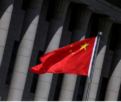 CommentariesTop Story
China’s stock market fall sounds alarm bells
CommentariesTop Story
China’s stock market fall sounds alarm bells
-
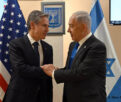 Commentaries
Middle East: Opportunity for the US
Commentaries
Middle East: Opportunity for the US
-
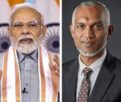 Commentaries
India – Maldives Relations Nosedive
Commentaries
India – Maldives Relations Nosedive
-
AdSense code

















